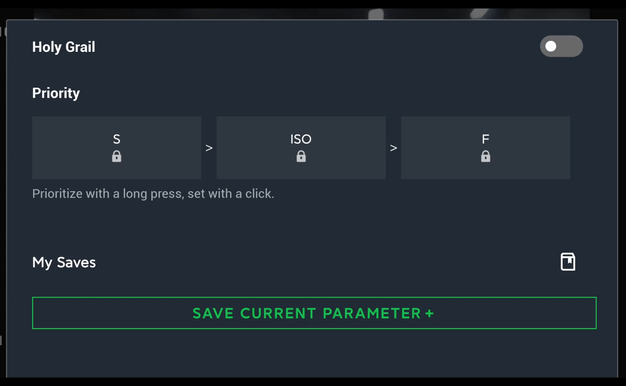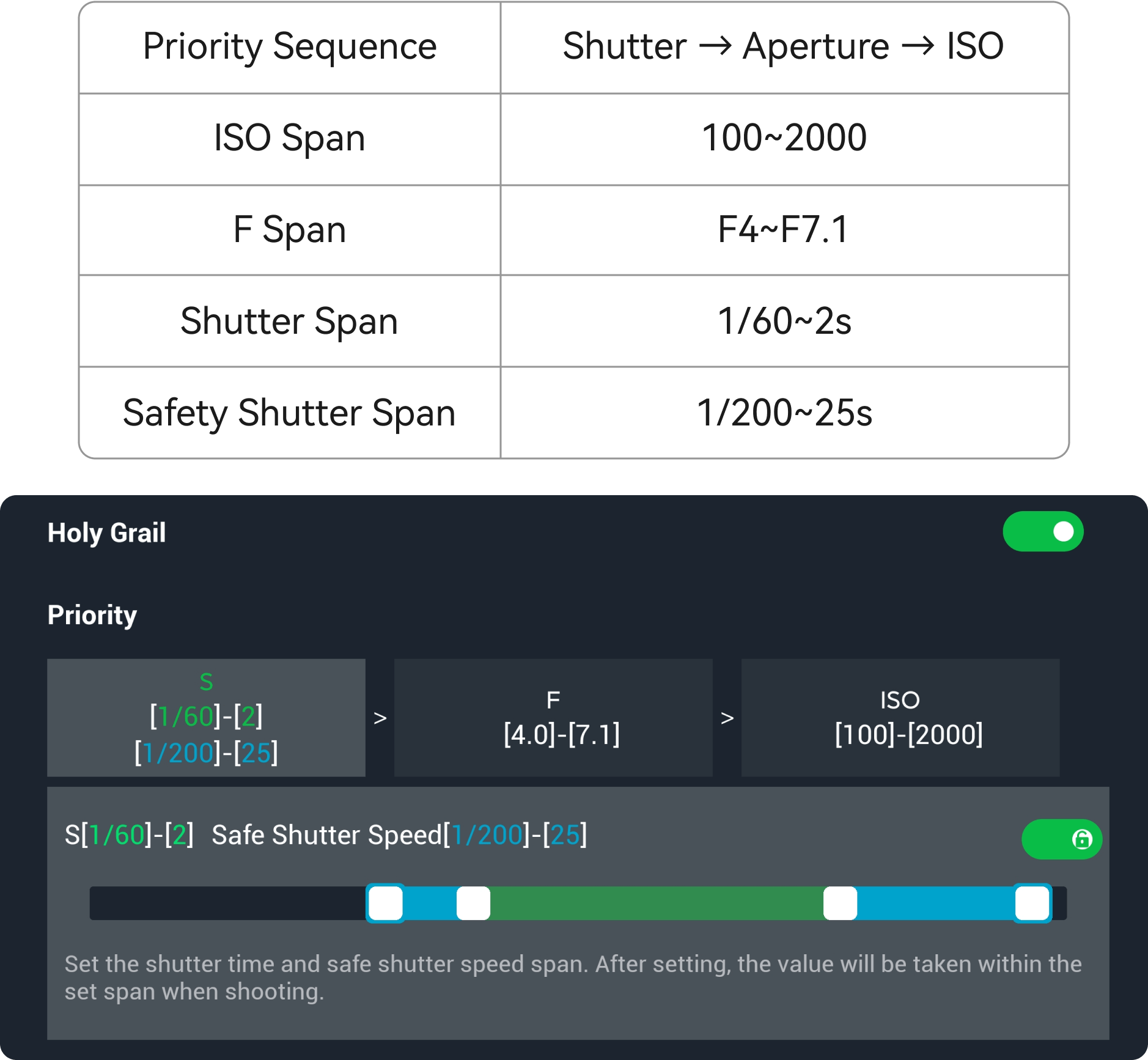Loading, please wait...
Coming Soon...
SUBTOTAL

Loading, please wait...
Coming Soon...
SUBTOTAL
Be the first to find out about our newest offerings and hottest deals, and what's new.
The Polaris would accumulate the brightness histogram of the last 3-4 photos to reach a more accurate calculating result and help create a smoother brightness transition during time-lapse. It would adjust the camera parameter in a preset order of priority sequence to make sure that the brightness of the next photo would match the preset target brightness.
Polaris adjusts its camera parameters in a specific order to meet its target brightness. It starts by adjusting the parameter with the highest priority. If the preset span of this parameter alone cannot achieve the desired brightness, Polaris moves on to the second priority parameter. It continues this process until it has adjusted the preset span of all adjustable parameters. If the target brightness is still not met, Polaris will adjust the camera's shutter speed. However, if the shutter speed has reached its predefined limit of the safe shutter span, Polaris will not make any further adjustments.
Users can adjust the priority sequence by long-pressing and dragging the block. The actual sequence can be decided according to personal preference and use habits. Here are 6 optional sequences

The ISO is set to be locked originally. Users can unlock to set the ISO value range by dragging the cubes. After setting, the value will be taken within the set range of values when shooting.
Lock: After locking, the ISO cannot be adjusted during shooting
Span: During shooting, the value of ISO will be taken within the span you set.
The aperture is set to be locked originally. Users can unlock to set the aperture value range by dragging the cubes. After setting, the value will be taken within the set range of values when shooting.
Lock: After locking, the Aperture cannot be adjusted during shooting
Span: During shooting, the value of Aperture will be taken within the span you set.
Users can unlock to set the shutter value range by dragging the cubes. After setting, the value will be taken within the set range of values when shooting.
Lock: After locking, the shutter cannot be adjusted during shooting
Span: During shooting, the value of shutter will be taken within the span you set.
Safety shutter span: It is the span between the maximum and the minimum of safe shutter. (The shutter would be adjusted within the safe shutter span when it still fails to reach the target brightness after adjusting all the parameters. Meanwhile, the shutter would not change anymore after reaching the top value of safe shutter span.)
During the shooting process, there are two values that you need to consider, which are the initial brightness and the target brightness.
The initial brightness is the average value of the brightness of the first few photos calculated by the Polaris after each shooting begins. Once the value of the initial brightness is determined, the target brightness for this shooting will be calculated based on this value.
The target brightness is the incremental value relative to the initial brightness. During the shooting process, the Polaris will adjust the brightness of the next photo based on the initial brightness and the camera parameters set in the priority order until the brightness of the current photo approaches or reaches the target brightness.
3. The standard for setting the
target brightness
① Turn on the Holy Grail button at the top right corner and click edit. Click the knob and drag it upside down vertically to set up the target brightness value.
② The target brightness can be adjusted between -5 and +5 gears, with a minimum scale of 0.5. The gear position is similar to the EV gear position of the camera parameters, and the larger the value, the brighter the target brightness.
③ The coordinate axis uses the trend of the target brightness as the y-axis and time as the x-axis. At x=0, the position of the y-axis is used to define the value of the initial brightness (i.e., the calculated average brightness value) in the APP. You can drag up or down on the y-axis according to your usage habits to define the value of the initial brightness.
Examples of a Shooting
from Day to Night to Day
1
Increase the shutter time: 1/30 ··1/20 ··1··2. The Polaris would stop adjusting when the shutter time reaches 2s.
2
Enlarge the aperture: 7.1 ··5.6··4. The Polaris would stop adjusting when the aperture value reaches 4.
3
Increase the ISO value: 100··200··400··2000. The Polaris would stop adjusting when the ISO value reaches 2000.
4
Increase the shutter time: 2··3··5··25. The Polaris would stop adjusting when the shutter time reaches 25s, even though the final brightness still fails to reach the target brightness. Meanwhile, the shutter time would be limited to 25s.
1
Decrease the shutter time: 25··5··3··2. The Polaris would stop adjusting when the shutter time reaches 2s.
2
Decrease the ISO value: 2000··400··200··100. The Polaris would stop adjusting when the ISO value reaches 100.
3
Shirk the aperture: 4··5.6··7.1. The Polaris would stop adjusting when the aperture value reaches 7.1.
4
Decrease the shutter time: 2··1··1/20··1/30··1/200. The Polaris would stop adjusting when the shutter time reaches 1/200s, even though the final brightness still fails to reach the target brightness. Meanwhile, the shutter time would be limited to 1/200s.
Welcome to visit the page and know more about the
time-lapse interval if you are interested in it.


















